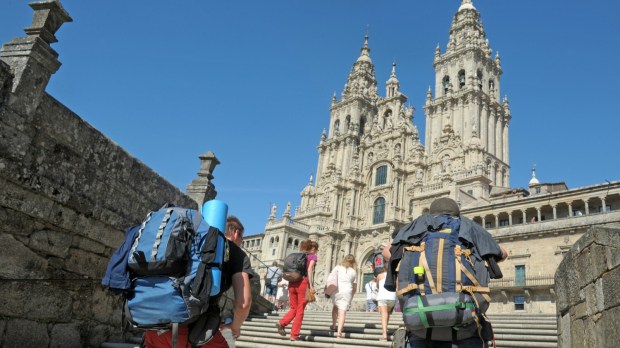Friday 12 August 2022
~
1- Could Francis establish a Church role for lay preachers?
2- Cardinal Czerny: a papabile and the new Lustiger
3- Pilgrims return to Santiago de Compostela in “the year of rebirth”
~
Could Francis establish a Church role for lay preachers?
The end of summer in the US means many Catholic universities host conferences with catechetical and evangelical events where numerous lay people give talks on conversion and the faith. Lay preachers are not exclusive to the US though and feature in Catholic churches and institutions across the world. This brings The Pillar’s editor-in-chief, JD Flynn, to ask if Pope Francis might consider “norms to regulate, and normalize, the role of lay preachers in the life of the Church,” after having done this for lay people serving as catechists with a motu proprio published in 2021. The American journalist suggests a “commission of lay ‘diocesan preachers’ with an actual ecclesiastical office,” which could “infuse some ecclesiality into the cottage industry of lay Catholic preachers,” revitalize “ the longstanding Catholic tradition of preaching the Word of God outside of Mass,” and could “help to buoy the faith of disaffected Catholics.” This kind of office could also help “regulate a broad disparity of remuneration” and avoid “Catholic celebrities,” as some preachers may feel incentivized to charge a high speaking fee for travel and give talks. Flynn also says the regulated presence of lay preaching could help to highlight why homilies are different, special, and unique and cannot be done by anyone. Although Francis has “opened new doors for laity” in the Church, the American journalist estimates it is “hard to say” whether he would regulate the role of lay preachers.
The Pillar, English
For Vatican expert John Allen, Cardinal Michael Czerny seems to be a “new Lustiger,” the French cardinal who was Archbishop of Paris from 1981 to 2005. Cardinal Czerny has several similarities with Lustiger. They both have a personal history linked to Judaism, as Cardinal Czerny’s grandparents, of Jewish origin, were victims of the Holocaust and his own mother survived the camps. Czerny is also one of the right-hand men of the current Pope, as was Lustiger, “stalwart protégé of his pontiff,” John Paul II. Czerny is also an important actor in the Church and a “papabile” in case of a conclave. The Czech-Canadian cardinal, who has just turned 76 – the age at which Francis was elected – does, however, have “one potential drawback” to his election: Unlike Lustiger, who “governed one of the world’s most complex archdioceses for almost 25 years,” Czerny has relatively little traditional pastoral experience. However, the same was said of the future Pope Benedict XVI in 2005, which didn’t stop the cardinals from electing him anyway, notes Allen.
Crux, English
Pilgrims return to Santiago de Compostela in “the year of rebirth”
More than 200,000 pilgrims have arrived in Santiago de Compostela in Spain since the beginning of January 2022, in what has been called “the year of rebirth” after a decrease in visitors due to the health restrictions to contain the COVID-19 pandemic. Journalist Irene Argentiero was one of the many who walked the famous pilgrimage route this summer and wrote about her experience for Italian Catholic press agency SIR. She went with her diocese, which organizes an annual pilgrimage lasting 10 days and covering around 150km (93 miles) of the route. The group of around 40 pilgrims of all ages passed through towns perched on the Atlantic, walked on paths overlooking beaches, through dense woods, and saw cats, cows and donkeys grazing in the Spanish fields. They did the northern route, which the author explains is quite challenging and thus only chosen by around 6% of the pilgrims. “You get the urge to breathe deeply and reach out, spreading your arms wide to embrace that solitude imbued with a nature that we go back to experiencing as a mother, and not as a stepmother, as we were led to think in the heart of the pandemic,” Argentiero explains. When they finally made it to Santiago de Compostela on July 3 they were speechless and incredulous. “But in the end we were all there. With our stories, our kilometers and our bandaids,” the journalist writes.
SIR, Italian

